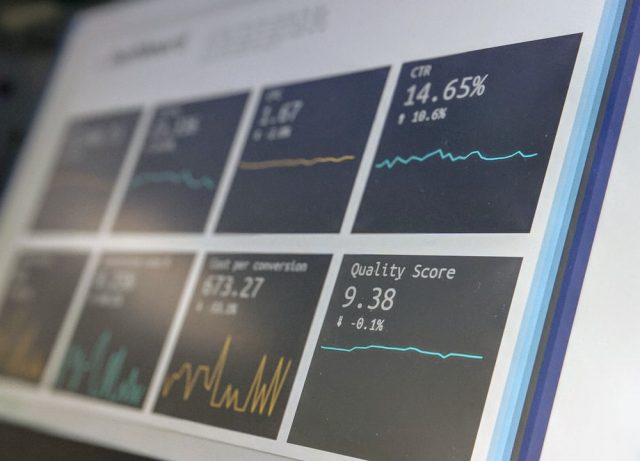5 key learnings for a destination marketer

In the spring semester 2020 I attended a very interesting course called Destination Marketing, which is a part of the Tourism Marketing and Management master’s programme. The course gives an overview on different aspects of destination marketing in the rapidly changing world and offers interesting content for anyone interested in destination marketing. Here are my 5 key learnings from the course:
Destination vs a company
Traditional marketing approaches are a good basis for destination marketing. However, destinations are not companies, which makes a huge difference in their marketing. Every destination marketer should keep in mind a few differences between destination and company marketing. Marketing strategy for a company does not necessarily fit the needs of a destination.
Whereas a company can control basically everything they do in terms of marketing, a destination management/marketing organization (DMO) has very little control on the execution of a marketing strategy. A destination is a complex entity consisting of different actors and stakeholders, which are not bound to any strategies or plans made by the DMO. A DMOs goal of course is to make a marketing plan that benefits all. Still there might be companies in the area that have completely different goals and business objectives. Those are very likely not to follow the strategy by the DMO.
Probably all destinations try to communicate some kind of brand. A company can control quite well how they communicate their brand to the customers. The image of a destination among visitors is however strongly dependent on the encounters between the visitors and the local operators. A DMO can’t control the quality of the actual visitor experience.

Operant resources
Every destination has some tangible and intangible resources that it can use for competitive advantage. However, the resources as such don’t create competitive advantage. Firstly, operand resources, such as sun and sea, exist in other destinations, too. Secondly, the destination has very little control on them. There is nothing a destination can do to get more sunny days than it already has.

The potential sources for competitive advantage lie more in the interaction between the destination and its stakeholders. A destination must recognize, which are the potential competitive advantages it can create with stakeholder collaboration and how to do that. The knowledge and skills to do that are called operant resources. The heart of a destination’s competitive advantage lies In the operant resources. In conclusion, a destination marketer must understand the difference between the two types of resources and enhance the use of operant ones in the destination marketing. In many cases this requires the collaboration between a variety of different stakeholders.
Smart destinations and data sharing
Digitalization is inevitable in tourism business. It is changing also the function of destinations and how destination marketing and management organizations are working. Smart tourism and smart destinations are very popular concepts in tourism business of today.
The core of destinations has traditionally been something physical, e.g. attractions, activities and availability. Nowadays, technological aspects are more and more important. A more customer-oriented approach in destination marketing is needed. But it’s wrong to think that technology is all in all. After all, technology is just a tool, it’s not the core of destination marketing. Leadership, innovation and collaboration are also key issues if a destination wants to be smart. Real time engagement, mobile technology, online inventory and co-creation are just a few examples of the features of smart destinations.
Purchasability and online inventory have traditionally been a problem in many destinations. Luckily, destination managers have realized this and are working on making the buying of activities and other services easier online.
Another problem many destinations still face is data. One key feature of smart destination is the use of data that they are getting from customers. The problem here lies in the collaboration. It would be crucial for the individual tourism companies to share the data with other companies and the DMO. This way the whole destination profits from the data. In real life, most of the companies keep the data to themselves. This is quite understandable – many companies fear that they lose their competitive advantage against other operators in the area. Here the help of the DMO is needed – trying to change the attitude and view of the companies. Even though being competitors, the companies must still learn to collaborate with each other. That is the only way to a customer-oriented, smart destination.

Impact of consumer–generated content on the brand
Most of destination marketers recognize the importance of consumer–generated content in their marketing. Social media posts about the destination and online reviews by customers are free marketing and visibility for a destination. Destinations often encourage consumers to write something about their destination. The possible threats are in many cases taken into account. Consumers can post something negative, which of course is not desirable but with an action plan can be managed.
However, the impact of consumer generated content on the destination brand is something that destinations might overlook. Because of Web 2.0 and social media, destinations no longer are the major controllers over their brand and message. Nowadays, the branding content on the internet is based on interaction and participation of the consumers. Consumers can post whatever they like on social media, whereas in the past the destinations controlled the distribution of information. Nowadays, a brand can even be totally created in social media by consumer–generated content.
For destination marketers it’s important to notice that consumer–generated content does not necessarily match the brand that the destination wants to communicate. It can be totally different than marketer–generated content. For example, consumer generated content rarely includes the formal elements of the brand, such as slogans and logos. After all, those are important elements in marketer-generated content. What should the destinations do when the control of the brand is largely outside of the company?
Authentic content
Last but definitely not least I want to highlight the importance of authentic content. Internet and other media are full of marketing content created by marketers. From the highly scientific and empirical research we conducted on our lectures (discussing in the classroom), we got the results that traditional destination marketing videos are not interesting enough. No one wants to look at nice views with peaceful background music for longer than a few seconds. People are interested in authentic content with local people. Visitors don’t come to a destination with the main reason of spending money there but to learn something and educate themselves. This means that destination marketers need to shift their mindset from consuming to learning.

Onthe destination marketing course we had an interesting workshop with the CEO of VisitKarelia Jaakko Löppönen. He pointed out an issue with this approach that they as the destination marketers are facing: If the marketing material can’t be made by marketers and agencies but rather by the local people, who is willing to produce this content? And what kind of content should it be? The resources they as a DMO have are limited and often the more traditional content by agencies is the only option. This is an important question for us students as the future destination marketers to think about. We should totally forget the traditional destination marketing and focus on something new and innovating. Skills and knowledge to do that will be the competitive advantage of destination marketing and marketer of tomorrow.
- 5 key learnings for a destination marketer - May 18, 2020